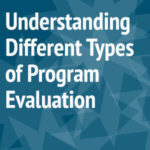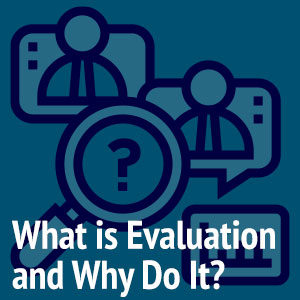 How do programs know what they should be doing— which target populations require services, the types of services programs should provide, the amounts of services, which kinds of services will be most effective, etc.? Needs assessments are the best way to determine the needs of individuals, communities, and other populations. A needs assessment is a systematic process for identifying and determining such needs. Like program evaluations, needs assessments draw on a range of social science methods—from surveys and observations, to focus groups and individual interviews.
How do programs know what they should be doing— which target populations require services, the types of services programs should provide, the amounts of services, which kinds of services will be most effective, etc.? Needs assessments are the best way to determine the needs of individuals, communities, and other populations. A needs assessment is a systematic process for identifying and determining such needs. Like program evaluations, needs assessments draw on a range of social science methods—from surveys and observations, to focus groups and individual interviews.
Needs assessments assume a clear definition of “a need”. As James Altschuld and Ryan Watkins point out in New Directions in Evaluation, No. 144, Winter, 2014 “A need, in the simplest sense, is a measurable gap between two conditions: what currently is, and what should be….This requires ascertaining what the circumstances are at a point in time, what is desired in the future, and a comparison of the two.” Needs assessments don’t just exclusively focus on what is and should be, but also on gathering and synthesizing data about how to narrow the gap between the existing state and the desired state. Needs assessments also prioritize needs so that users of the assessment can address specified needs in a reasonable order, and devote appropriate resources to meeting identified needs.
By gathering data from a range of stakeholders, needs assessments are able to determine the best means to achieve the desired results. To be effective, however, needs assessments must not simply focus on deficits in individuals and communities, but must also explore existing strengths, capacities, and assets. Too narrow a focus on “what’s missing” can blind researchers and program designers to the existing assets on which effective programming can be built. Effective needs assessments therefore, ask questions about: 1) on-going needs, 2) current strengths/assets/ capacities, 3) and desired states.
Needs assessments may differ in their design, but regardless of design, most needs assessment follow these phases:
- Explore and gather data about the current condition/state of affairs (including existing assets)
- Explore/identify desired or optimal condition/state of affairs
- Analyze data to understand the difference or “gap” between the current condition and desired condition.
- Prioritize identified needs and “gaps.”
- With needs (and assets) in mind, design program to address (diminish or eliminate) the gap between existing needs and desired state.
When conducted in a timely and thoughtful way, needs assessments can be of substantial utility in helping programs to effectively deliver services to those who most need them. To find out more about our assessment methods visit our Impact & Assessment reporting page.
Resources:
“Needs Assessment: Trends and a View Toward the Future,” New Directions in Evaluation, No. 144, Winter, 2014 James W. Altschuld and Ryan Watkins (eds.)
Definition of Needs Assessment
https://en.wikipedia.org/wiki/Needs_assessment
Comprehensive Needs Assessment
http://www2.ed.gov/admins/lead/account/compneedsassessment.pdf
Needs Assessment Surveys
http://ctb.ku.edu/en/table-of-contents/assessment/assessing-community-needs-and-resources/conducting-needs-assessment-surveys/main
Methods for Conducting an Educational Needs Assessment
http://www.cals.uidaho.edu/edcomm/pdf/BUL/BUL0870.pdf



